Applications and Examples of Big Data from Real Life
Big Data and our ability to effectively capture it has had a significant impact on the corporate landscape. There are multiple big data use cases across all sorts of sectors and industries as it provides useful inputs for any growth-centric culture.

Apr 16 2020 ● 6 min read
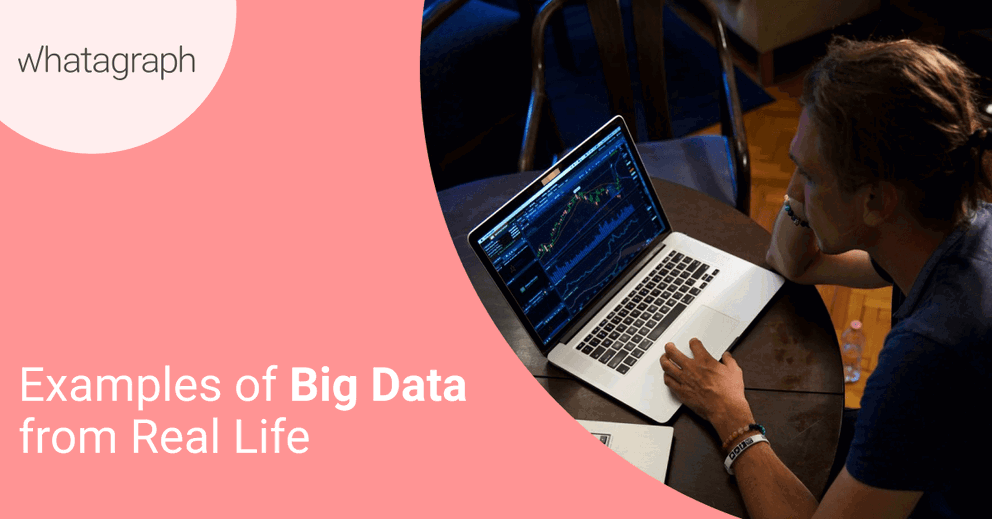
There are several examples of big data that we are going to explore and use it to showcase how these inputs were utilized. In reality, capturing relevant information on a large scale is a daunting task, but processing or formating the raw information is even more difficult.
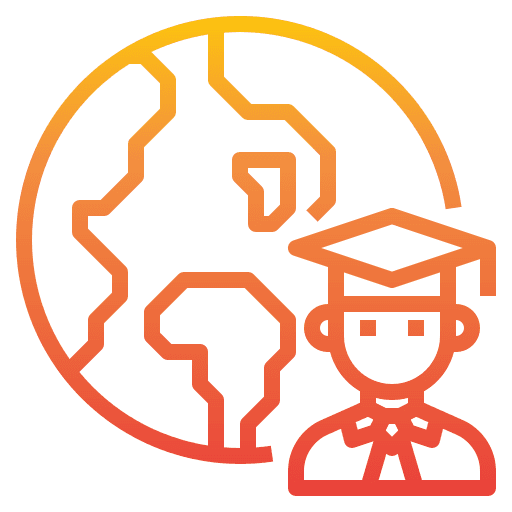 | Education Industry |
Curriculum, courses, students, teaching methods, grading systems as well as other things related to education have significantly evolved over the past few decades.
Sure tech development, market demand, and new findings on multiple fields impact the education system, but big data inputs play a major role as well. As far as big data use cases go here they are mainly related to improving operational effectiveness.
Here are some examples of big data impact on the education industry:
- Customization of learning programs:
Each student is different and excels at a different pace depending on the subject. By examining the learning history of each student they can be grouped and distributed to courses that are tailored to meet their learning pace, and thus improve their performance.
This also extends to course material as data can reveal the importance of the content as well as the difficulty of comprehending the material. By identifying these gaps, materials can be modified or formatted in a way they are easier to digest. - Evaluation or Grading system:
This is pretty self-explanatory and it is subject to a continuous optimization process for grading systems like 'GPA'. Expectations and performance are constantly adjusted across the board thanks to the analysis of big data. - Predicting careers:
By analyzing students’ performance and market demand schools can generate accurate career options for students, which they can use as guidelines for future specialization.
 | State Governments |
Another sector where a huge amount of information needs to be processed is the state governments. This is not just related to the election campaign and approval ratings, it also has to do with citizen population, geographical research, energy resources and carbon emission, and a lot more.
The data that the government collects becomes a part of big data and thanks to ETL tools the data is effectively processed, formatted and graphically represented to the officials who need to make decisions based on the analysis.
Whatagraph Live Reports can be one of those tools. Take a look and find out more: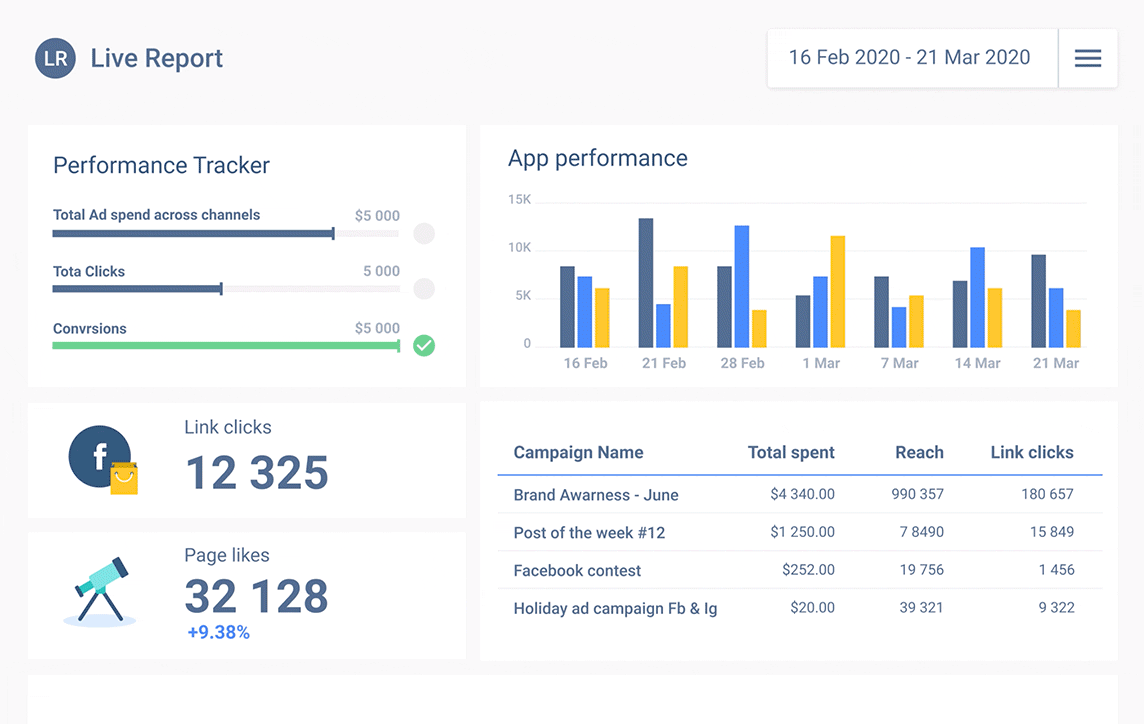
Once again here are some specific examples of big data use cases:
- Welfare
Based on data analysis the government can formulate adequate political programs, or tend to the areas that need immediate attention.
They can keep up with agricultural production schedules and forecasts when it comes to crop growth, livestock etc. - FDA (Food and Drug Administration)
FDA leverages big data analytics to identify patterns of food-based allergies or infections, and come up with an updated program for a healthy diet. - Law enforcement
Ever since our finances went digital it has become easier to use big data to track fraudulent funds, tax evaders, recognize deceit, and effective due diligence transaction parties.
By collecting the data and making it available to AML and Compliance teams, banks become better equipped to combat corruption and money laundering. Banking is a whole separate sector that is driven and improved based on big data feedback.
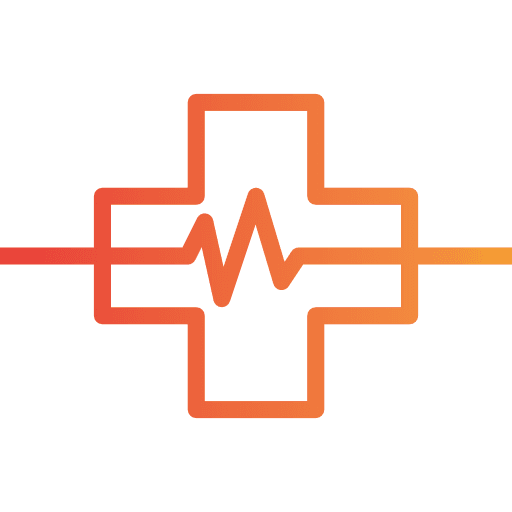 | Healthcare Industry |
Big data plays a crucial role in the improvement of healthcare systems around the world. Its examples, in this case, would be reduced treatment costs by avoiding redundant diagnosis, or the ability to predict virus outbreaks.
Furthermore, thanks to the availability of information, doctors can detect serious diseases early on which makes treatment more effective.
There is also a major improvement in how medical data is stored. A good example would be Apple HealthKit, which in a way empowers the users to store their health records electronically so that they can be easily accessible upon demand.
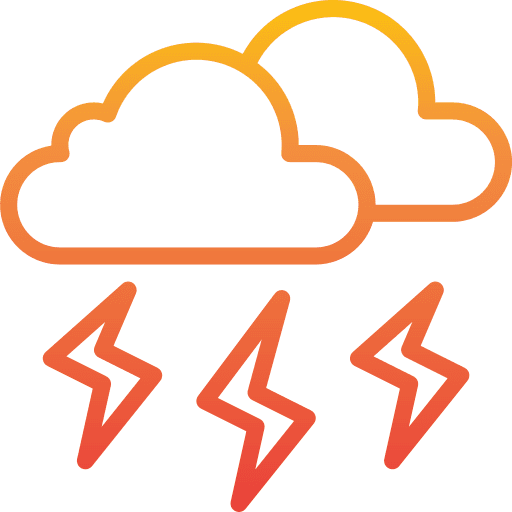 | Weather Forecast |
We rely on satellites or weather sensors that are scattered all across the globe, to obtain data on weather conditions. This is important because many businesses or households rely on weather forecast data and plan around it.
Thanks to the satellite feed and data analytic techniques we can effectively track and study global warming, and continue to raise awareness of the consequences it will bring.
Similarly, we can predict natural disasters and take the necessary action to mitigate the damages. For example, it’s perfectly common for roofers to chase storms nowadays, as there are tools that can help them be at the right place at the right time and repair the damages caused by hail.
Other big data use a case in the weather forecast is predicting the amount of usable water all around the world.
Natural resources and natural disasters are truly important elements for the survival of the human race, so when you think about it, big data analytics is sort of a guardian that prevents societies from crumbling.
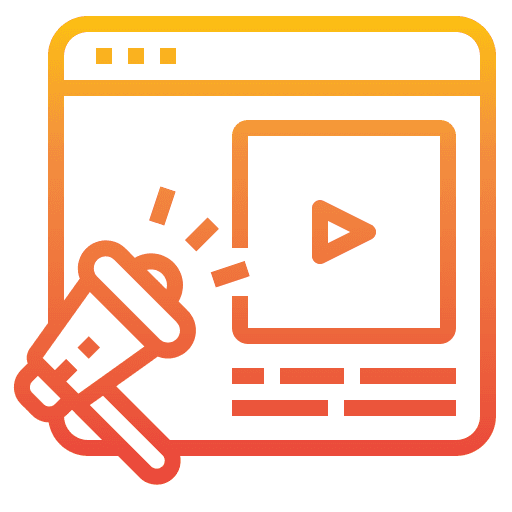 | Entertainment and Media |
If you enjoy watching YouTube, shopping online, reading blog posts, etc. chances are you have witnessed a great deal of big data-driven marketing at play.
Maybe you have noticed how websites or channels that have similar content also have similar sponsors, which is because data showed how their target user profiles also share an interest in that type of content.
If you searched for a specific product and purchased it in the shop, the ads on social media start to market the same or similar product. Also online streaming services like Amazon Prime or Netflix, strongly rely on big data to create more engaging or relevant user interfaces, as they suggest the shows based on your view history.
In other words, big data is used for:
- Predicting the interest of a specific user group - This is done by analyzing browser data of a shopper, viewer, or service user.
- Optimizing air time for streams, podcasts, or other forms of digital media - Analyzing feedback on how many users tune in for a live feed, or during which time frame your video gets the most views or site gets the most visits.
- Product improvements - by distributing customer surveys or capturing user reviews retailers know what product updates or user incentives can drive future sales.
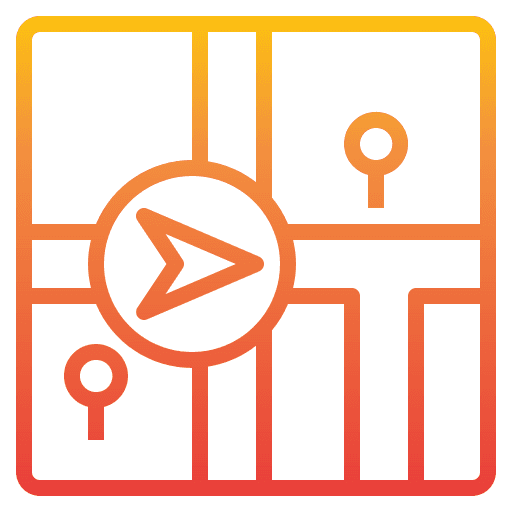 | Transportation and Traffic Management |
Lastly, we have to mention transportation as a heavy user of big data analytics. Road construction, route planning, traffic management and safety in traffic all depend on big data gathering analysis.
Today, we have navigation tools that help us pick the most effective route to reach our destination or simply avoid routes that could cause a delay due to construction for example.
Furthermore, we have speed managing instructions that help drivers navigate through large urban areas and mitigate the chance of traffic jams. When it comes to safety there are areas where accidents are more likely to occur, and today drivers can be informed when to slow down or increase caution.
A perfect example of big data implementation is Uber. The service is so effective and reliable because it uses big data to match customers with the closest driver.
FAQ
What is an example of big data?
Big data refers to information obtained on a great scale or from a high number of users. Healthcare, weather forecasts and huge retail businesses tend to collect data on a global scale.
What are the types of big data?
Similar to regular data, big data can be split into 3 categories or types:
- Structured
Processed and formatted by given goal or demand - Unstructured
Raw data that is pending processing or clearing. It is just captured or user-generated and nothing more. - Semi-structured
It is data that is organized but not entirely structured, so it’s more flexible when compared to structured data, in terms of how you can use it or format it.
How is big data used?
It is used to provide relevant historic feedback to major industries, predict future outcomes based on identified patterns, and to suggest the best course of action depending on goals.
Published on Apr 16 2020

WRITTEN BY
Gintaras BaltusevičiusGintaras is an experienced marketing professional who is always eager to explore the most up-to-date issues in data marketing. Having worked as an SEO manager at several companies, he's a valuable addition to the Whatagraph writers' pool.